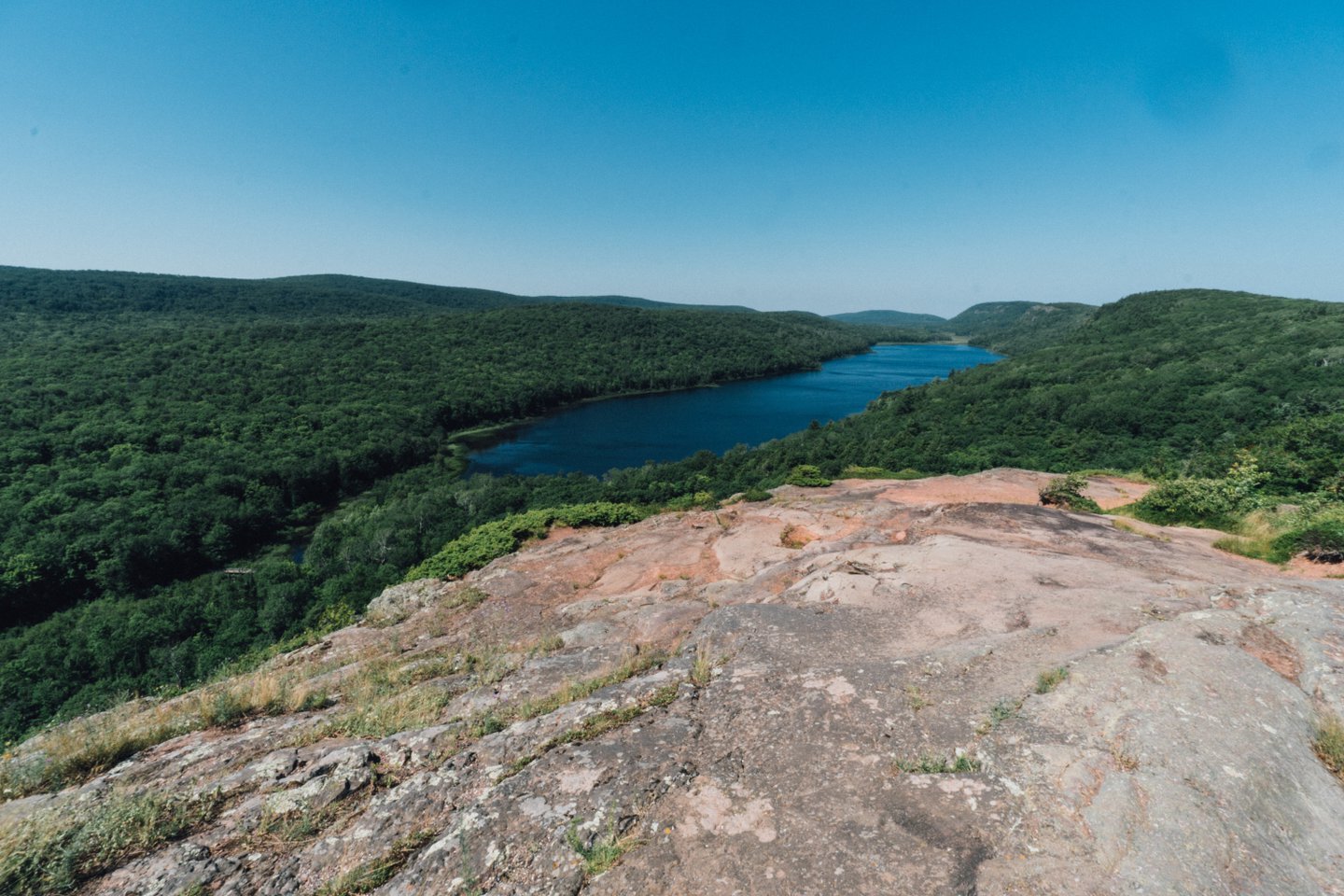Hidden Morel Forests In Michigan’s Upper Peninsula

Have you ever wondered where to find morel mushrooms in Michigan's Upper Peninsula? This region, known for its dense forests and rich soil, is a paradise for morel hunters. Springtime brings these elusive fungi to life, making it the perfect season for a mushroom hunt. Whether you're a seasoned forager or a curious beginner, the Upper Peninsula offers plenty of spots to explore. From the Hiawatha National Forest to the shores of Lake Superior, the opportunities are endless. Grab your basket, lace up your boots, and get ready to uncover the hidden treasures of Michigan's wild landscapes.
Hidden Morel Forests in Michigan's Upper Peninsula
Michigan's Upper Peninsula is a treasure trove for morel mushroom hunters. These elusive fungi thrive in the region's dense forests, offering a delightful challenge for those who seek them. Here are some hidden spots where you might find these tasty treasures.
1. Hiawatha National Forest
Hiawatha National Forest spans nearly 900,000 acres, providing ample space for morel mushrooms to flourish. The forest's diverse ecosystem, ranging from wetlands to hardwoods, creates the perfect environment for these fungi.
- Best Time to Visit: Late April to early June
- Tips: Look near dead or dying elm trees, old apple orchards, and areas that have recently experienced a fire.
2. Porcupine Mountains Wilderness State Park
Known for its rugged beauty, Porcupine Mountains Wilderness State Park is also a prime location for morel hunting. The park's old-growth forests and varied terrain make it a hotspot for these mushrooms.
- Best Time to Visit: Mid-May to early June
- Tips: Search in areas with rich, loamy soil and plenty of leaf litter. Morels often grow near decaying trees and fallen logs.
3. Tahquamenon Falls State Park
Tahquamenon Falls State Park is famous for its stunning waterfalls, but it's also a hidden gem for morel hunters. The park's mixed hardwood forests provide an ideal habitat for these fungi.
- Best Time to Visit: Early May to late May
- Tips: Focus on areas with a mix of hardwood trees like maple, oak, and beech. Morels often appear after a good rain.
4. Pictured Rocks National Lakeshore
Pictured Rocks National Lakeshore offers breathtaking views and a chance to find morels. The park's diverse landscapes, from sandy dunes to dense forests, create a unique environment for mushroom hunting.
- Best Time to Visit: Late May to early June
- Tips: Check near the bases of trees and in areas with plenty of moisture. Morels are often found in the shade of large trees.
5. Seney National Wildlife Refuge
Seney National Wildlife Refuge is a haven for wildlife and morel mushrooms alike. The refuge's wetlands and forests provide a rich habitat for these fungi.
- Best Time to Visit: Early May to mid-June
- Tips: Look in areas with a mix of wet and dry conditions. Morels often grow near the edges of wetlands and in forested areas with plenty of leaf litter.
6. Ottawa National Forest
Ottawa National Forest covers nearly one million acres, offering endless opportunities for morel hunting. The forest's diverse habitats, from hardwoods to conifers, support a wide variety of fungi.
- Best Time to Visit: Late April to early June
- Tips: Search in areas with a mix of tree species, especially near dead or dying trees. Morels often appear after a warm rain.
7. Isle Royale National Park
Isle Royale National Park, an island in Lake Superior, is a remote and pristine location for morel hunting. The island's forests and rocky terrain create a unique environment for these mushrooms.
- Best Time to Visit: Mid-May to early June
- Tips: Focus on areas with rich soil and plenty of moisture. Morels often grow near the bases of trees and in shaded areas.
8. Keweenaw Peninsula
The Keweenaw Peninsula, jutting out into Lake Superior, offers a unique landscape for morel hunting. The peninsula's forests and rocky terrain provide an ideal habitat for these fungi.
- Best Time to Visit: Late May to early June
- Tips: Look in areas with a mix of hardwood and conifer trees. Morels often grow near the bases of trees and in areas with plenty of leaf litter.
9. Sault Ste. Marie State Forest Area
Sault Ste. Marie State Forest Area, located near the eastern tip of the Upper Peninsula, is another great spot for morel hunting. The forest's diverse habitats, from wetlands to hardwoods, support a wide variety of fungi.
- Best Time to Visit: Early May to late May
- Tips: Search in areas with a mix of tree species, especially near dead or dying trees. Morels often appear after a warm rain.
10. Escanaba River State Forest
Escanaba River State Forest, located in the central part of the Upper Peninsula, offers a rich habitat for morel mushrooms. The forest's diverse ecosystems, from wetlands to hardwoods, create the perfect environment for these fungi.
- Best Time to Visit: Late April to early June
- Tips: Look near dead or dying elm trees, old apple orchards, and areas that have recently experienced a fire.
Discovering Morel Forests in Michigan's Upper Peninsula
Exploring morel forests in Michigan's Upper Peninsula offers a unique adventure. These hidden spots are perfect for those who love nature and foraging. The best time to find morel mushrooms is during spring, especially after a good rain. Look near dead or dying trees, as morels often grow there. Remember to bring a basket and a knife for harvesting. Always check local regulations to ensure you're foraging legally. Morel hunting can be a fun family activity, providing both exercise and a chance to connect with nature. Plus, cooking with freshly picked morels is a treat. Whether you're a seasoned forager or a beginner, Michigan's Upper Peninsula has plenty to offer. Happy hunting!

